64 kinds of national treasures, calligraphy and paintings and objects that China permanently bans exhibitions abroad! (The second episode)
The introduction and sharing of the previous episode has won everyone's love. Lin Lan Painting and Calligraphy Education is your good friend, focusing on the research, teaching and inheritance of Chinese painting and calligraphy.
EPISODE TWO
In the first episode, I introduced a very wonderful and mysterious treasure, which is loved by everyone. This episode will be even more exciting!
🔽17. Bronze Square Mirror in Tomb of King Qi The
Western Han Dynasty. The mirror is 115.1 cm long, 57.5 cm wide, and weighs 56.5 kg. There are five ring-shaped stringed buttons on the back, and two buttons on each short side. Each ring button is decorated with a persimmon pedicle pattern. Now in the collection of Zibo City Museum.🔽18. Casting a large bronze tripod
During the Warring States Period, it was the largest and heaviest tripod in existence since the Zhou Dynasty. Now in the collection of Anhui Provincial Museum.
🔽19. Lacquered wooden clogs unearthed from the tomb of Zhu Ran
Three Kingdoms Period (Wu). This lacquered wooden clogs looks similar to current wooden clogs. It is currently the oldest lacquered wooden clogs in China. It was more than 1,700 years ago and caused a sensation when it was exhibited in Japan that year. It proves that wooden clogs were spread to Japan through Tang culture in China, and finally they were gradually used by Japan. Now in the collection of Ma'anshan City Museum.
🔽20. Lacquer plate of the life of the nobles in Zhu Ran
Three Kingdoms Period (Wu). For the food container, the picture in the lacquer tray is divided into three parts: the upper part is the banquet picture; the lower part is the traveling picture; the middle part includes three pictures: the right side is the eagle training picture, the middle is the game picture, and the left is the dressing picture. Now in the collection of Ma'anshan City Museum.
🔽21. Lacquer screen unearthed from Sima Jinlong Tomb
🔽22. Mural of Lou Rui's Tomb
During the Northern Qi Dynasty, the tomb of Lou Rui in Taiyuan, Shanxi was unearthed in 1979. "Kurama Traveling Map" is located in the middle column of the west wall of the tomb, and it is opened in a scroll. Now in the Shanxi Provincial Museum.
🔽23. Nirvana in Disguise Stele
Tang Dynasty, the relic of Dayun Temple in Linyi County, Shanxi Province. The front of the stele is carved with six pictures of the story of Nirvana, and the upper four pictures-the left side is "na coffin" and "dying ring", the right side is "dapi" and "mourning". Now in the Shanxi Provincial Museum.
🔽24. Changyang Taizun Stone Statue
Tang Dynasty, Taoist temple relics in Anyi Town, Yanhu District, Yuncheng, Shanxi Province. The statue is 150 cm high and carved from white stone. Holding a fan in his right hand, holding a few in his left hand, sitting cross-legged on a rectangular stone seat. Now in the Shanxi Provincial Museum.
🔽25. Big Yu Ge
In the early Shang Dynasty, 1974 was unearthed from Tomb No. 3 of Lijiazui, Panlong City, Huangpi. The jade ceremonial guard is 94 cm long, 14 cm wide, and only 1 cm thick. It can be called the "King of Jade Ge". Now in the collection of Hubei Provincial Museum.
🔽26. Zeng Hou Yi Chime
🔽27. Outer Coffin of the Tomb of Marquis Yi
In the early Warring States period, in 1978, it was unearthed from the tomb of Marquis Yi Zeng in Leigudun, Suizhou, Hubei. This museum is a super-large lacquerware that is the oldest, the most complex, the largest, and the heaviest in China. Now in the collection of Hubei Provincial Museum.
🔽28. Zeng Hou Yi Bronze Plate
In the early Warring States period, in 1978, it was unearthed from the tomb of Marquis Yi Zeng in Leigudun, Suizhou, Hubei. This discovery confirmed that in the early Warring States period 2,400 years ago, China's lost wax casting technology had reached an extremely high level. Now in the collection of Hubei Provincial Museum.
🔽29. Painted wood carving small seat screen
During the Warring States Period, it was unearthed in 1965 from Tomb No. 1 Wangshan, Jiangling, Hubei Province. The height is 15 cm, the length is 51 cm, the seat width is 12 cm, and the screen thickness is 3 cm. Now in the collection of Hubei Provincial Museum.
🔽30. Hongshan Cultural Goddess Statue
Late Neolithic. An important discovery of Hongshan culture is the goddess temple in Niuheliang. The walls have been painted, and there are a large number of fragments of figures, including heads, shoulders, and hands, all of which are female. This is the earliest goddess statue in China. Now in the possession of Liaoning Provincial Institute of Cultural Relics and Archaeology.
🔽31. Duck Shaped Glass Note
Beiyan period. Pale green glass, bright, semi-transparent, with slight silver-green rust. A pair of duckling-like triangle wings are glued on the back with glass strips. The shape of this vessel is vivid and unique, which is very rare in early glassware. Now in the collection of Liaoning Provincial Museum.
🔽32. Bronze God Tree
During the Shang Dynasty, in 1986, the Sacrificial Pit No. 2 of Sanxingdui, Guanghan, Sichuan was excavated. The earth bronze sacred tree is composed of a tree base and a trunk. The trunk is 384 cm high and 396 cm high. From the perspective of its shape, the bronze sacred tree should represent the oriental sacred tree "Fusang".
Today’s first episode is here, the next episode will be more exciting, continue...
64 kinds of national treasures, calligraphy and paintings and objects that China permanently bans exhibitions abroad! (Episode Three)
Episode two
Episode Four
Lin Lan’s calligraphy and painting education, focusing on calligraphy and calligraphy research and teaching, thank you!





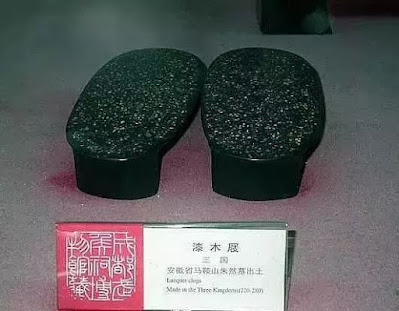
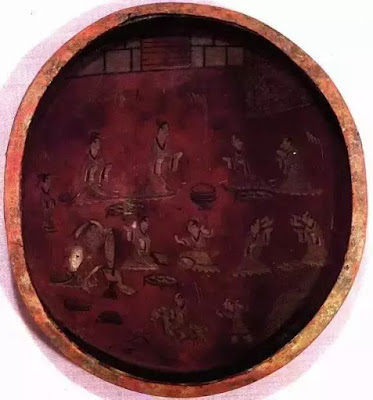
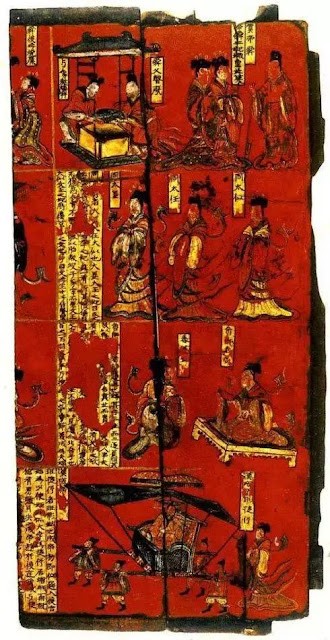





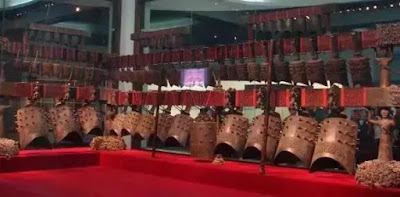



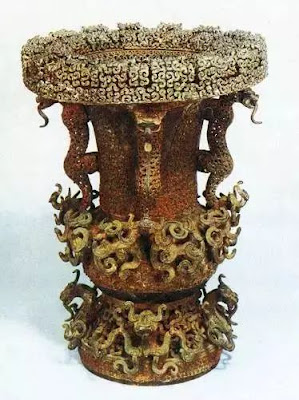


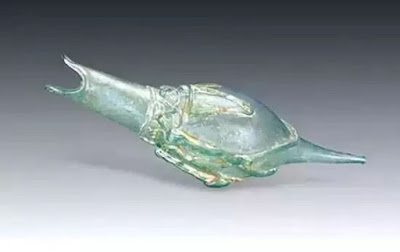













No comments: